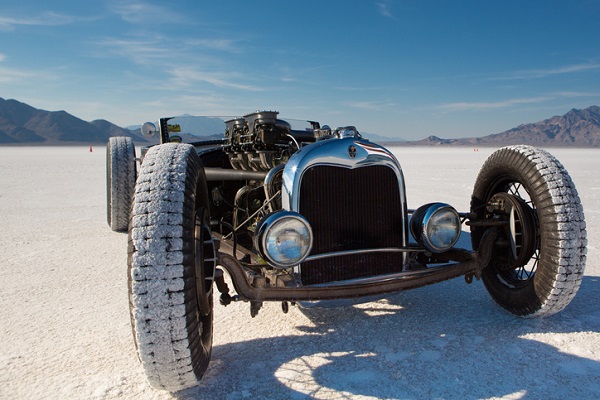Interested in Auto Mechanic Training? Meet the Cars that Conquered the Bonneville Speedway

Spanning over 30,000 acres in Utah, the Bonneville Salt Flats are both a beautiful landscape and the perfect place to push a car to its limits. The history of the Bonneville Speedway began in 1907, when a Pierce-Arrow drove across the flats to test its driveability. This soon drew the attention of racers everywhere looking to break speed records and test their car’s capabilities. Today, Bonneville is a name synonymous with racing and land speed records.
If you want to become an auto mechanic, read on to find out more about the cars at Bonneville that made history.
Auto Mechanics Might Be Interested in the Early Bonneville Daredevils
Bonneville became home to the first unofficial land speed record when driver Teddy Tetzlaff drove his custom 200 hp Blitzen-Benz to 228.09 km/h in 1914. Bonneville’s reputation for speed got another boost in 1925, when racer Ab Jenkins challenged a Union Pacific Railroad train to a race across the flats and won, beating the train by nearly five minutes.

Just over twenty years later in 1935, Malcolm Campbell raced into the record books in his Bluebird car, which rocketed to 484.95 km/h and was the first car to cross the 300 mph barrier—a notable event even for those in an auto mechanic course today. After this historic achievement, racers from around the world flocked to Bonneville, and it became the primary location for drivers looking to break the latest land speed records.
Students in Auto Mechanic Training Might Wonder What’s Under the Hood of These Cars
Since Bonneville is at the centre of the action for land speed records, racers have to bring their best cars and their top-of-the-line engines along with them. These impressive engines are likely to perk the interest of more than a few students in auto mechanic training.
Campbell’s abovementioned Bluebird, for example, had a 36.7 L engine, which boasted the same engine capacity as a supercharged Rolls-Royce R V12 used in airplanes. It also had an eye-popping output of 2,300 hp! Two front and four rear wheels were added to increase traction and reduce the estimated 80km/h of power lost during wheel spin.
Gary Gabelich set the last outright record at Bonneville in 1970 when he reached an astonishing 1,014.6 km/h in his rocket-powered Blue Flame, which was fueled by liquefied natural gas and propellants made of hydrogen peroxide.
One of the most inspiring stories of the Bonneville racers is that of Challenger II. In 1968, Mickey Thompson tried to beat his personal record of 654.4 km/h in his 1800 hp streamliner Challenger II, but was rained out on race day. The Challenger II returned to Bonneville after 50 years in 2018, however, with a few upgrades, swapping its 427-cubic inch V8s for two nitro-fueled 2500 hp Hemis—although it kept its classic chassis and aluminum bodywork. The Challenger II even stayed in the family: Mickey Thompson’s son Danny took the car to a record 722.193 km/h, making it currently the fastest piston-powered, wheel-driven vehicle in the world.
Today, racers still flock to Bonneville to challenge their cars on the salt flats. Check out the latest from Bonneville as driver Dave Spangler took the Turbinator II to the all-time fastest exit speed of 756.88 km/h in this clip below:
Are you interested in crossing the finish line into a rewarding automotive career?
Contact CATI for more information about our auto mechanic certification.
